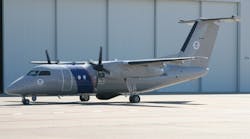The security and surveillance radar market is expected to experience impressive growth in the next six years. MarketsandMarkets estimates this market to be at $6.1 billion in 2014. It is predicted to excel at a CAGR of 5.97% to reach $8.6 billion in 2020. The report, “Security and Surveillance Radar Market (Land Systems, Airborne System, and Naval System)—Global Forecasts and Analysis to 2014-2020,” covers emerging opportunities, influences, and improvements in this market.
Opportunities stem from the development of active electronically scanned array (AESA) technology, the rising use of radar on unmanned aerial vehicles (UAVs), and the modernization of air-defense networks. The greatest growth opportunities for maritime surveillance radars are in Southeast Asia. Concerns in that region include smuggling and illegal trade, piracy, and heightened naval threats between countries.
According to the report, a country’s decision to cut or invest in the security and surveillance radar market is influenced by many things: passive radars to provide anti-stealth defense options; multi-mission radars; growing demand in missile defense applications; change in global defense power; and changes and progression in military operations. MarketsandMarkets expects the airborne platform to see the most growth. The land-based platform will follow, along with the maritime platform.
Space and maritime-based radar will see significant technology improvements. Smaller UAVs are feasible, as well as making unmanned vehicles more intelligent and able to work in “swarms” with other unmanned/manned vehicles. In addition, digital radar can be used to detect stealth aircraft using low frequencies. And digital systems can advance space radar with transmitters in space and receivers on the ground. The physical separation of transmitters also is a growing trend in radar technology.
In terms of maritime radar, underwater surveillance will grow because of the development of advanced radar and sonar. In the future, it may be possible to depict three-dimensional objects by using laser technology. A surveillance matrix comprising long/medium-range maritime reconnaissance (LRMR/MRMR) aircraft, amphibious aircraft, and UAVs, for example, can be used to provide coastal surveillance. With stealth technology gaining worldwide importance, the reaction time of military sensors must improve. Additionally, target tracking and guiding radars must be enhanced to better engage targets.
The report spotlights nanotechnology as the next paradigm shift in military capabilities. Radars that are lightweight, strong, and multifunctional will be used in combat systems while enhancing surveillance protection and connectivity. The maritime platform seeks the greatest improvement among the three (land based, maritime, and airborne). MarketsandMarket’s forecasts growth for all areas by 2020.
